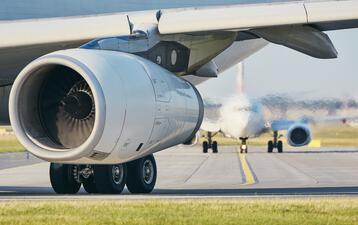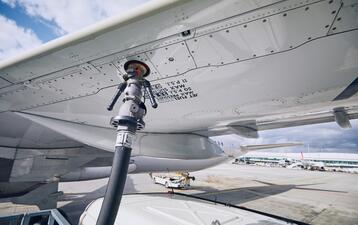Assessment of eco-efficient flight procedures at Leipzig/Halle Airport
Saxon State Office for Environment, Agriculture and Geology
airsight examined in this research and development study whether the aircraft noise impact in the airport vicinity of Leipzig/Halle airport (EDDP/LEJ) could be reduced by optimizing vertical profiles of existing approach and departure procedures. The effects on CO2 emissions from approaches and departures were also investigated. The aim of the study was to identify eco-efficient approach and departure profiles that reduce both noise exposure and CO2 emissions in the vicinity of Leipzig/Halle airport.
Leipzig/Halle airport is characterized by a strong portion of flights during night time. An optimization of flight procedures w.r.t. aircraft noise therefore appears reasonable to further improve the noise situation around the airport.
For the development of study variants, it was necessary to evaluate the current state of research in the field of eco-efficient approach and departure procedures. Based on this literature review, expert interviews and a workshop with relevant stakeholders was conducted (inkl. representatives of airlines, air traffic control and airport operator) to develop study variants for arrivals and departures based on the following criteria:
- Flight movements and representative aircraft types
- Approach and Departure procedures as published in the AIP
- Variation of vertical profiles for departures and comparison to baseline (Noise Abatement Departure Procedures with varying thrust reduction and acceleration Altitudes)
- Variation of vertical profiles for arrivals and approaches (e.g. steeper approaches or continuous descent operations)
After defining the approach and departure scenarios including different variants of operational procedures, the noise contours LAeq,day and LAeq,night as well as the flight-specific CO2 emissions were calculated. Subsequently, the noise contours resulting from the calculation were intersected with population data to enable an assessment of the different variants with the help of scientific-based exposure-response-functions (ERF). The CO2 emissions and the associated fuel consumption were quantified and compared on the basis of fuel costs. For calculation of aircraft noise and fuel consumption, airsight used the Aviation Environmental Design Tool (AEDT).
If you would like to learn more about airsight's services related to sustainable aviation and aircraft noise, please visit our Sustainable Aviation page. We also look forward to receiving your email on any sustainable aviation related issues you would like to discuss with us!
Key Facts



